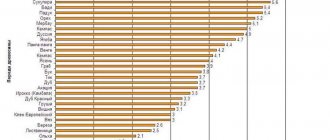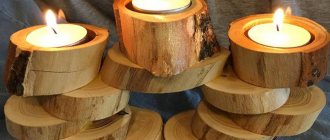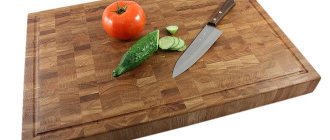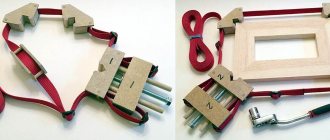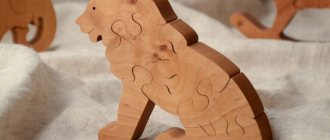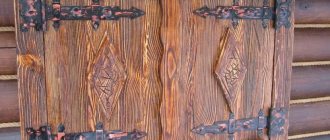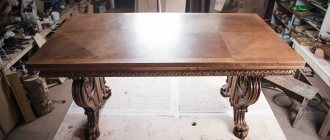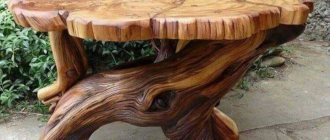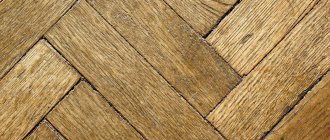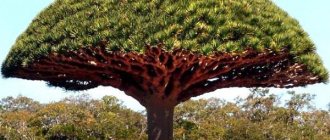Wood products, finishing from various types of wood, wood as a building material are always popular. Wood is a beautiful, warm, stylish, easy-to-process material. When making various panels, parts, fragments and compositions, along with fasteners, wood glue is required. Which of its several varieties is better to choose, what features and properties each of them has - let's figure it out.
Every day new varieties of wood glue appear, and well-tested ones are constantly being improved and their characteristics are improving. The choice of such adhesive depends on the characteristics of the product or structure made of wood, and the required properties after manufacture.
PVA
Children's crafts, paper applications and various three-dimensional paper toys are strongly associated with this name. But polyvinyl acetate glue (PVA) has proven itself to be excellent when applied to wood. Many carpenters and woodworkers love to work with it. The disadvantage of PVA is its instability to moisture. Therefore, it is not suitable for outdoor use and damp areas. However, it is convenient to work with, it is inexpensive, and dries quickly.
Recently, moisture- and even water-resistant PVA has appeared. They are more resistant to moisture, but much more expensive than regular glue. Another advantage of PVA is its lack of toxicity.
Wood glue
Wood glue - classic. It has features related to manufacturing. The quality of the glue depends on this process. The powder for its preparation can be bone or flesh. Use hot wood glue; as it cools, it thickens and hardens. You can soften it in a water bath or steam. Suitable for restoration of antiques and repair of ancient musical instruments. The sound of an instrument sometimes depends on the quality of wood glue.
The modern version of wood glue does not harden during the cooling process, making it much more convenient to work with. Sold in liquid form, no mixing or heating is required. Apply a thin layer along the grain. Before setting, it is necessary to secure the parts with clamps.
My services
I have the opportunity to help organize your own cooking of urea-formaldehyde resin. In this case, this glue will cost 3 - 6 rubles per kilogram. I provide various consulting services on resins and adhesives for wood.
In addition, there is a book about making this glue; it’s not even a book anymore, but a technology. It contains everything from information about equipment to cooking technology. Everything is chewed, and the dosages and parameters for cooking resin are explained.
In fact, the cost of such information costs about 100 thousand rubles. This is exactly how much my friend charges for setting up the technology. I’m giving it away practically for free, more details about the technology in the “BOOKS” section.
Syndeticone glue
To increase strength, sugar (powdered sugar) and slaked lime are added to wood glue. The result is syndeticone glue. The advantages of this composition are high bond strength, resistance to moisture and chemicals. The disadvantage is the cooking time. The glue must swell for 12 hours before use.
What types are there?
Wood adhesive compositions based on polyurethane, organic resins and PVA have gained great popularity and love among consumers.
Kinds
Products for gluing wood have different compositions and areas of application. Most materials are positioned as universal products, for which fastening wooden elements is only one of the areas of use. Other products are produced as single-purpose formulations, so they are not intended for contact with other types of materials.
There are several different compositions.
- PVA glue is sometimes called a dispersed adhesive.
The main characteristics of such products are:
- lack of toxicity, due to which the composition can be used indoors without additional safety measures;
- quick adhesion to the surface;
- static load of 60 kg/cm2;
- unlimited service life of the product;
- Can be used on any surface.
The disadvantage of this glue is the method of diluting it, which is based on adding water, which negatively affects the reliability of fixation in rooms with high humidity levels. To ensure high-quality gluing of elements, it is recommended to add wood dust to this glue.
- Epoxy adhesive is a two-component composition, the use of which requires mixing substances in a given ratio. The product provides strong fixation and is universal in terms of application. Epoxy compounds are waterproof, resistant to aggressive substances and fuels and lubricants. The time for complete hardening depends on the thickness of the applied layer. The disadvantages of the material include the need to protect the skin and overconsumption, since it is impossible to calculate exactly how much ready-made solution will be needed to treat the surface.
- BF is a type of glue that includes several variants of the product. For wood materials, series 2 and 4 are recommended. This composition has the feature of very fast hardening. On average, this requires 50-60 minutes, but provided that the humidity and temperature are within normal limits.
The compositions must be applied in two layers with short intervals. The fourth series of glue is frost-resistant products. The disadvantage of BF is the need for mandatory preliminary cleaning of the wooden surface with degreasing.
- Heat-resistant adhesive compositions produced in the form of rods. To work with such products you will need a special gun. The scope of application of the products mainly concerns fastening small parts or sealing defects in a wooden surface.
- Wood adhesives. To work, the products need to be prepared. Wood glue is based on organic protein, which is the main adhesive substance. It is necessary for joining various wood materials: hardboard, paper, cardboard, wooden products. The natural composition ensures safety of use.
The origin of the main component of carpentry compositions is different.
Products are classified based on the type of raw materials.
- Mezdrovy. The main component in such products is a substance that is formed during the processing of animal skin. The material can be produced in the form of flakes, tiles or powder.
- Bone. The raw materials for it are the bone remains of animals. The products have an average price. It is better to use a transparent composition instead of unrefined mixtures with impurities.
- Casein. Widely used in aircraft modeling and shipbuilding. It is neutral to dampness and forms a strong connection. To prepare the composition, you must strictly observe the proportions and time interval.
- Fishy. It is prepared from the remains of fins and scales. The composition is considered a professional product intended for gluing surfaces with varying degrees of hardness. The glue has a fairly high cost, so it is positioned as a furniture glue and is used for the repair or restoration of expensive furniture.
- Moisture-resistant solution. You can prepare it yourself using slaked lime and cottage cheese, which has recently curdled.
There is a certain technology for making wood glue. To do this, the dry mass is poured with water and left for 6-12 hours so that the composition completely absorbs moisture. Then the remaining water is drained, and the mixture is heated in a water bath until the substance is completely dissolved. The cooking process requires periodic stirring. It is important to control the process so that the mixture does not boil. The glue is applied strictly in the direction of the wood fibers, then the elements are pressed against each other and fixed. The main disadvantage of the product is the reduction in gluing efficiency in the case of wood moisture content exceeding 10%.
See also: How to choose interior blind doors
- Syndeticone glue. It is prepared from wood glue with the addition of lime and powdered sugar. The product is distinguished by a high level of strength of the connection of elements. The glue is waterproof and resistant to chemicals. The disadvantage of the product is the rather long preparation process, since the mixture for the solution must be kept in water for 24 hours.
- Glue paste. It is prepared on the basis of carpentry composition, wood ash and chalk. The material performs well when priming and puttying wood.
- Polyurethane products. It is the most expensive among the above range. The material has a number of positive features. The area where the composition is applied perfectly withstands high dynamic loads.
This material is ideal for repairing furniture, such as chair legs that become loose over time. The composition is also highly resistant to various temperatures, moisture and solar radiation. It is better to glue wooden structures that are used in extreme conditions with this particular composition.
Casein glue
If desired, casein glue on an organic basis can be made even at home, because casein is part of cow's milk. But ready-made powder for preparing an adhesive is available on sale. Before use, it must be diluted in cold water, stirring thoroughly. Preparation takes 60 minutes. Casein glue is used for gluing wood and leather, wood and fabric. Glue has been used for a very long time, and it is still quite popular today.
Features of the production of certain types of glue
The main “gluing” component of animal adhesives are protein substances - collagen, casein. For the production of organic adhesives, animal skins and flesh are used - skin with remnants of adipose tissue, bone tissue.
Production of hide glue
The process of producing adhesive from flesh consists of several stages:
- Processing of raw materials. Cartilage and animal skins are used. They are first sorted by size. The type of animal from which the flesh is obtained and its age are taken into account. Parts unsuitable for making glue are removed.
- Grinding. Large pieces are cut using cutters.
- Washing in mesh washing machines. The raw materials are purified in vats filled with lime milk or an alkaline solution. The process is called "liming".
- Washing and dissolving. The raw materials are washed in clean water, that is, “delimed,” and alkaline-soluble proteins, lime, and calcium contaminants are removed from the mass. Neutralization of alkali occurs by using a weak solution of hydrochloric acid.
- Fill with boiling water and evaporate at a temperature close to 60°C. A fecal pump is used to fill the vats. Cooking time is about 7 hours.
- Clarification and filtration of collagen solution.
- Pouring the adhesive mass into molds.
- Hardening at temperatures up to 25°C, drying.
The finished product must meet the quality standard GOST 3252-80. Hide glue. Technical conditions. After testing, the glue is packaged in paper bags of 5-6 layers. The weight of the packaged product should not exceed 50 kg. The adhesive that goes on sale has information about the date of manufacture, batch number, shelf life, weight, and composition.
To store hide glue, it is necessary to purchase containers and form a flooring from boards to prevent excessive moisture in the packages. The permissible humidity level is no more than 90% in the package.
Furniture manufacturing enterprises, construction firms, and organizations involved in icon painting, glass painting, gilding, and the production of adhesive paints are constantly in need of supplies of hide glue.
Equipment supporting the production process
- Trolley vats for flesh (sorting, washing) - from 16,300 rubles. The purchase of 10 carts with a capacity of 200 kg will cost 160,300 rubles.
- Crushing machine (food mill WF-60B) costing about RUB 1,075,000. Machine productivity is up to 300-500 kg of raw materials per hour.
- Filter presses - from 150,000 rubles.
- Drying cabinet ASESH-8-2 set - from RUB 216,000.
- Evaporator - from 250 thousand rubles.
- Weighing dispenser for bulk products VD1-V8 - from 105 thousand rubles.
On average, 1,956,300 rubles are spent on the acquisition of main production units.
The average price of a product on the market is 585 rubles. per kg.
Bone glue is produced in a similar way. The difference is that a different substance is extracted from the bones - ossein, which is also a type of collagen.
Casein glue
The usual name for casein glue is stationery. It is produced both in liquid form and in the form of free-flowing yellowish granules. The main raw material for production is skim milk, which is generated as waste from dairies. The following are used as auxiliary components:
- rennet enzymes;
- sodium hydroxide;
- lime;
- borax;
- copper sulfate;
- kerosene;
- liquid glass;
- technical turpentine;
- phenol;
- ammonia solution;
- water;
- rosin.
Casein glue is most in demand in the printing industry and for gluing wood. Casein glue is used to stick stamps on envelopes and labels on clothes. Casein glue has high heat resistance, and in comparison with carpentry glue, it resists moisture better. However, if you do not include antiseptics (borax, ammonia solution) in the composition, the glue begins to deteriorate due to the formation of mold.
There are 2 ways to make casein glue: granular and ejector. Grained is more labor-intensive. Its use involves treating milk with acid whey with constant stirring, as a result of which casein is precipitated in the form of grains. The use of the ejection method eliminates the process of constant stirring of the mass. It is the ejector method that is used at large industrial enterprises for the production of “milk” glue. In this case, the production process is divided into stages:
- Fermentation of skim milk with lactic acid bacteria. The optimal temperature for sourdough is about 35°C. The end result is a clot called “kale”, the acidity of which reaches 90%.
- Processing using an ejector. A vacuum is created in the device box. Using a pump, the calla is fed into the box. The fermented milk is exposed to a powerful stream of steam, the temperature of which reaches 55-60°C, as a result the curd acquires a granular structure. The product is washed to remove alkali and iron impurities.
- Removing water. “Raw” contains a large amount of moisture, to remove which the mass is subjected to centrifugal forces in a centrifuge or pressed.
- Grinding. The compressed layers of casein are fed to casein crushers. An alternative way to obtain glue grains up to 6.3 mm is by grinding through a metal sieve. Experienced technologists use rollers installed in a funnel for crushing. The latter serves as a receiver for large pieces of glue loaded using an excavator.
- Screening. The crushed mass enters the swinging conveyor, or “shaker”. Reciprocating movements promote the movement of mass in the forward and reverse direction, resulting in sifting.
- Drying. The resulting small particles of glue are placed in dryers or in the sun to get rid of excess moisture.
In industry, “extra” and regular adhesives are used. The latter has a valuable property - reversibility, that is, the frozen solution can be heated again and used for sizing without fear that the substance will lose its adhesive ability.
The average cost of dry casein glue is 700 rubles. per kg.
Equipment
To manufacture the product you need the following equipment:
- A crushing machine, for example, is a universal hammer crusher DM-400 costing about 85,000 rubles. When choosing a unit, it is worth studying the characteristics, since most crushers cannot cope with products of high humidity.
- Sifter. Installation of vibration type MP 500/1000 will cost approximately 43,000 rubles.
- Vertical screw mixers. Horizontal drums can also be used. They take up more space, but mixing the components in them is more efficient, since each rotation of the drum will mix the entire mass. The cost of horizontal and vertical mixers differs slightly. For example, a horizontal LNG installation will cost approximately 80,000 rubles, and a vertical UWB installation will cost about 105,000 rubles. The cost will depend on the capacity of the container.
- Centrifuge. The cost of the equipment depends on the size of the bowl. For example, the SG800 model will cost 121,000 rubles; maximum load is 135 kg, and bowl volume is 100 l. A model with a load of 420 kg will cost 260,000 rubles.
- If necessary, you can purchase a drying cabinet costing from 216 thousand rubles, or get by with drying in the sun (depending on the region of residence).
- Weighing dispenser for packaging glue VD1-V8 - from 105 thousand rubles.
The total cost of the equipment will cost approximately 650,000 rubles.
The glue is packaged in tight, moisture-proof packaging. In the finished product warehouse, it is necessary to systematically control air humidity, otherwise, absorbing condensation, the granules will lose their adhesive properties.
By producing dry casein glue, you can equip a line for the production of liquid glue. For this, the following solvents are used:
- borax;
- ammonia;
- sodium hydroxide;
- soda
When combined with casein, a colloidal solution is formed, which liquefies when heated and solidifies when cooled.
To make glue, you can use not only products of animal origin, but also plant products. These include starch pastes and dextrin glues sold in the form of white powder.
Synthetic adhesives are used for gluing leather, wood, plastics, metals, as well as surfaces that are not similar to each other. They are divided into thermosetting and thermoplastic.
Glue BF
Butyral phenolic adhesive creates a hard, slightly elastic joint that can withstand high temperatures. There are many varieties of BF glue: for steel, for non-ferrous metals, and even in medicine, BF glue is used for gluing and closing wounds. In the name of the glue after “BF” there is a number indicating the content of vinyl additives. The higher the number, the more elastic the glue.
The main composition of the glue is phenol-formaldehyde resin, polyvinyl acetate, polyvinyl butyral, and alcohol, acetone, and chloroform are used as a solvent.
To produce BF glue, specialists with skills in working with hazardous substances are involved. The substances phenol and formaldehyde used in production are poisons, so enterprise personnel are required to undergo regular medical examinations.
All brands of BF glue are tested for compliance with the standards established by GOST 12172-2016 Phenol-polyvinylacetal adhesives. Technical conditions.
Production of thermoplastic PVA glue: raw materials, stages, equipment
Adhesives that are constantly popular due to their universal properties and excellent quality are “Cedar”, “PVA”, “Monolith”, “Moment”. All of them belong to the group of thermoplastic adhesives and are characterized by increased elasticity.
Thermoplastic resin adhesives are based on:
- polyvinyl acetate;
- perchlorovinyl;
- polyvinyl chloride;
- polyamide.
When rubber is added to them, resin-based adhesives become non-hardening and are used in the production of adhesive tape, stickers, decals, and adhesive tapes.
The most popular brand of PVA is divided into 2 classes: household adhesives and professional adhesives. Both contain the following substances:
- Adhesive components - resins, dextrin, starch.
- Fillers - chalk, talc, kaolin.
- Plasticizers - camphor oil or glycerin solution.
- Solvents based on gasoline and acetone.
- Hardeners.
- Substances intended to increase the shelf life of glue (stabilizers, preservatives).
The manufacturing process consists of the following stages:
- Preparation of raw materials. The components of PVA glue are weighed according to the recipe.
- Mixing in a mixer - dissolver. The cost of equipment type DS 1.02 is about 69,000 rubles.
- Packing. To fill containers, a dispenser for liquid and viscous products (with a screw pump) is used, the cost of which is 100,000-350,000 rubles. depending on the manufacturer and level of automation.
This equipment is also suitable for the production of paints, varnishes, enamel, putty, and primers.
The production of PVA is not considered hazardous, so the risk of harm to the health of employees is minimal. It is PVA that is often produced in the “garage” business format, since it requires minimal investment.
Epoxy resin
Epoxy resin adhesive is a two-component adhesive, one of which is a hardener, the second is a resin. It is increasingly used in furniture production. It is valued due to the strength of bonding of parts, moisture resistance, and resistance to various chemical influences. It is difficult to calculate exactly the required amount of glue. If there is more quantity than required for gluing, the remainder will have to be thrown away.
Important! Epoxy glue should be used carefully by people with allergic reactions and work exclusively with rubber gloves. In case of contact with skin, irritation may occur.
An example of calculating profit from production using the example of manufacturing PVA glue
When calculating production volume, you should be guided by the productivity of the equipment. The productivity of the dissolver is 60 kg/h, which means that if the equipment operates for 8 hours, 6 days a week, the production volume will be 11,520 kg of glue per month.
The average (market) cost of 1 kg is 84 rubles.
To produce 100 kg of glue, you will need raw materials worth 1,400 rubles, that is, the monthly cost of glue components is 161,280 rubles.
The company's fixed monthly expenses are:
- rent - up to 60 thousand rubles;
- salary to employees (6 workers, supply and sales manager, accountant) - 280 thousand rubles. (with an average salary of 35 thousand rubles);
- taxes, fees - about 70 thousand rubles. per month;
- payment of utility bills - about 10 thousand rubles. per month;
- advertising, other expenses - up to 8 thousand rubles.
The company's total expenses are 589,280 rubles, and its income is 967,680 rubles. Net profit - 378,400 rubles. per month.
Difficulties that you may have to face are high competition, establishing sales. The production of various types of PVA - stationery, household, universal, "super", carpentry - will help to avoid stagnation of goods in the warehouse. You can conquer your niche by offering a larger range of quality products for different categories of consumers.
Polyurethane glue
One of the most expensive types of wood glue, but it has excellent characteristics. Resistant to moisture and temperature. It is applied to a damp surface. You only need to work with it while wearing gloves to avoid dark fingerprints on the surface to be glued. Glues hard wood well.
If quick gluing of surfaces is necessary, use polyurethane hot melt adhesive using a special gun. Due to its quick setting, it is applicable to small parts or where it is not possible to use a clamp.
Which wood glue to choose?
The answer to the question in the title is that the glue must be chosen depending on the required properties of the product. That is, if you need resistance to high temperatures, then heat-resistant; if you need to glue quickly, then Moment or PVA will be useful; if the wooden structure will be exposed to moisture and water, use casein, polyurethane or epoxy glue.
There are types of glue that are resistant to chemicals, oils, and surfactants. There is wood glue that is waterproof, frost-resistant, resistant to fuels and lubricants, or, conversely, for temporary gluing - its layer can be easily destroyed with a hammer, the parts can be separated using steam, water or heat. An important characteristic of wood glue is how fast it dries.
Which glue is best for wood is not a completely correct question. The modern market offers a range of high-quality products for gluing wooden surfaces. It is best to choose one whose characteristics meet all the consumer’s requirements. It is also useful to listen to the opinions of professionals, reviews of experienced craftsmen and wood specialists.
Wood glue paste
You can make your own gluing paste. It is used for gluing wooden objects, the connection of which creates gaps of more than 2-3 mm. In this case, the adhesive paste serves as a putty with adhesive properties. The paste is also used for priming and puttying wood.
To prepare the paste, you need to mix hot wood glue, chalk and sifted ash.
Subscribe to our Yandex.Zen channel
You might be interested
- 04/12/2020 How to glue oily wood species
- 03/20/2020 Sturgeon glue for wood restoration
- 02/05/2016 How to choose a drill/driver for your home
- 12/30/2017 How can you fit a gaming chair into your home office design?
- 04/02/2020 Wood tinting
How to glue wood to wood
What glue to use to glue wooden parts to each other depends on several factors:
- wood species, wood colors;
- where the glued structure will be permanently located;
- what impact will be exposed to;
- size of parts and surfaces to be glued;
- what load the adhesive joint must withstand.
Also important are the cost of the glue, its consumption, whether it needs to be prepared and for how long, the speed of drying and hardening. Knowing all these parameters, an experienced craftsman can easily determine which glue is best suited for this product, parts or structure.
Advice from the experts
In order to properly glue wooden parts, structures, and surfaces together and with other materials, you need to listen to the advice of experienced carpenters and woodworkers. Such tips include:
- the quality of gluing depends on the quality of the glue and the quality of its preparation;
- the most liquid glue is used for gluing the ends of parts; it fills pores and irregularities well;
- before gluing, the surfaces must be carefully prepared - precisely adjusted and roughened with a rasp to ensure better adhesion;
- surfaces or parts for gluing must be clean, free of grease stains, dust, and dirt;
- the quality of the connection depends on the thickness of the glue layer, you need to apply a layer that is not too thick, but not too thin, it should be dense and uniform;
- Excess glue that is squeezed out must be immediately removed with a rag so that the glue does not have time to dry and spoil the appearance and color of the wood.
By listening to these simple but important recommendations, you can easily glue together wooden products or structures that meet all the requirements of quality, strength and aesthetics.
To remove excess glue, use an abrasive sponge
Using a rag to remove excess glue will be quite difficult. And if you don't completely remove the glue before it dries, it will then show up as stains on the surface as you apply the coating. But there is a way out! A synthetic abrasive sponge soaked in water is ideal for this purpose. Immerse the sponge in a container of water. Unlike a rag, which is difficult to clean from glue, a sponge consists of loose synthetic fiber, from which glue is easily removed. After blotting the sponge, shake it to remove excess water. Then use it to scrape off any excess glue. Once the job is completed, wipe the surface with a dry, clean cloth. Abrasive sponges can be found at hardware and construction stores.
